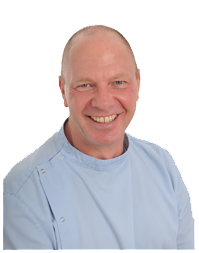Frequently Asked Questions
What is Osteopathy ?
“Treating the person as a whole”, Osteopathy aims at treating and strengthening the musculoskeletal framework. David uses touch, massage, articulation, stretching, manipulation and where appropriate, ultrasound to increase the mobility of joints, ease muscle tension and enhance blood supply to tissues to aid healing mechanisms. He may also provide advice on, lifestyle posture, ergonomics, and exercise to aid recovery, promote health and help prevent symptoms recurring. People who visit an osteopath consistently report high satisfaction with the care they receive, expressing high confidence in the treatment and advice of their osteopath, with rates in excess of 90% for both satisfaction and trust.
What should I expect on my first visit?
Osteopathy is a patient-centred, system of healthcare. Your first appointment with David usually lasts about an hour to allow adequate time to:
▪ Listen and ask questions about your problem, your general health, other medical care you are receiving or medication you are taking and record this in your case notes. These will be treated as confidential in accordance with the standards of practice set out by the General Osteopathic Council.
▪ Examine the area(s) of your body causing discomfort. Ask you to make simple movements and stretches to observe your posture and mobility. Sometimes the cause of the problem may be in a different area to the pain. (For example, pain in your lower arm may be linked to the nerves in your neck) so David may need to examine your whole body. He will need to feel for tightness in the muscles and stiffness in the joints and he need to touch these areas to identify problems. He will explain what he is doing as he goes along.
▪ if you are uncomfortable with any of this, you have the right to ask him to stop at any stage, without predjucing your future treatment.
▪ He will give you privacy to undress and dress by leaving the consulting room and will ask you to let him know when you are ready, towels will be provided if required. You can ask a friend or relative to accompany you and be present throughout your treatment.
▪ He will also check for signs of serious conditions he cannot treat and may advise you to see your GP or go to hospital. He will provide you with a letter explaining what he believes to be the problem
What to Wear?
As with any healthcare appointment, it may be necessary for David to ask you to remove some clothing. This is so he can see and touch the areas of the body causing you concern. He will want you to feel at ease, therefore if you feel uncomfortable undressing to you underwear simply bring along some shorts and a t-shirt that will enable him to work effectively. If you have any concerns about this please call him before the consultation and he will discuss this with you.
Diagnosis and Treatment
Osteopathy specialises in the diagnosis, management , treatment and prevention of musculoskeletal and other related disorders.
David will give you a clear explanation of what he finds (his diagnosis) and discuss a treatment plan that is suitable for you. He will explain the benefits and any risks of the treatment he is recommending. It is important to understand and agree what the treatment can achieve and the likely number sessions needed for a noticeable improvement in how you feel.
Treatment is hands-on and involves skilled manipulation of the spine and joints and massage of the soft tissues. David will explain what he is doing and will always ask your permission to treat you, (known as consent). Please ask questions at any time if you are unsure what you have been told or if you have any concerns.
Self-help measures and advice on exercise(s) may be offered to assist your recovery, prevent recurrence or worsening of symptoms.
Is Treatment Painful?
Osteopathic treatment is usually a very gentle process and osteopaths work very hard to make treatment as painless as possible. However because of the physical nature of the treatment you may feel some discomfort during the treatment and it’s not unusual to sometimes feel a bit stiff and sore in the first 24-48 hours after treatment, a bit like the feelings after playing a sport or working out in the gym for the first time after a break. David will always advise you to call him if you have any concerns if such reactions occur.
How many treatments will I need?
As each patient is unique this will depend on the nature of your of your individual problem and how long you’ve had it. As a rule more acute injuries such as muscle or ligament sprains will respond more quickly than longer term conditions, such as chronic low back or neck pain, related to degenerative changes in the spine. The majority of patients feel improvement after 2 to 4 treatments and David will always outline a full treatment plan during your initial consultation.In cases where treatment is not appropriate David will outline the reasons why.
Do I need a GP referral and will my private healthcare insurance cover the costs?
Whilst David receives many GP referrals it is not necessary and most of his patients come to him directly. He is registered with the majority of private healthcare insurers, but unfortunately, as a result of untenable restrictions applied by BUPA and AXA over the last few years, he is no longer registered with them. Many health care insurers do require you to be referred to an Osteopath by your GP, if they are to cover the costs, so it is recommended that you contact your insurer first to clarify this and also to check extent of your cover and as to whether any excess applies.
What hygiene measures have been put in place during the Covid-19 Pandemic?
David along with his fellow practitioners at Southmead Clinic have put in strict protocols, following Public Health England and professional body guidelines, to minimise the risk of infection by the coronavirus. A full copy of the updated Covid Policy can be found on this website and one is sent to each patient before they attend the clinic.


